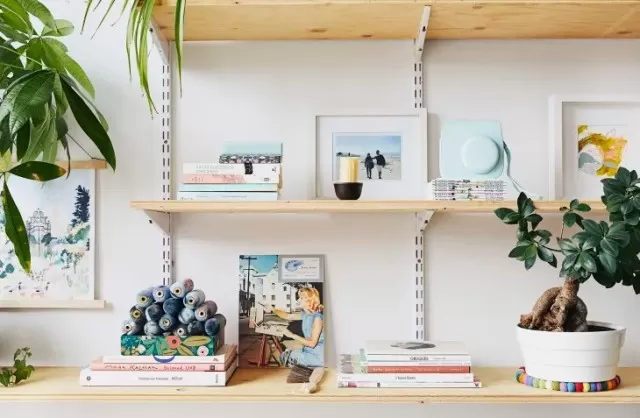You’ll come across numerous strategies but the key to achieving and maintaining organization lies in developing small daily habits.
There isn’t a definitive approach to organization.
You’ll come across numerous strategies and schedules that promise a flawlessly tidy home, but the key to achieving and maintaining organization lies in developing small daily habits. The idea of organizing can be daunting for many, so it’s important to manage your expectations as you begin the process.
According to Fay Wolf, a self-proclaimed “recovering perfectionist” and author of New Order: A Decluttering Handbook for Creative Folks (and Everyone Else), it’s essential to embrace imperfection and let go of the pressure to achieve a picture-perfect result like what you see on Pinterest.
There’s no need to invest in expensive storage systems or discard a significant portion of your belongings. Wolf believes that most messes can be resolved with recycled containers and sensible labeling.
By following these organizing principles, you can start bringing order to your home and maintain it over time.
Organization Rules You Should Follow

Change your perspective on the organization.
Shift away from the belief that organization is a fixed state of being, where you’re either organized or not.
Recognize that organizing is an ongoing process, and you’ll never reach a point of being finished. Don’t let the magnitude of a project discourage you from starting.
Taking even small steps is more productive than doing nothing at all. Additionally, allow yourself to let go of things.
When you decide to part with an item, you not only create physical space in your life but also declutter your mind by removing any future concerns associated with it.
Embrace the messiness of getting organized.
Getting organized often involves creating temporary chaos.
To effectively tackle clutter, follow Wolf’s approach for each room. Set up a designated area to sort through items, and gather five boxes (or alternatives like grocery bags or laundry baskets).
Label each container with categories such as donate, trash, recycle, shred, and items for other rooms. Focus on things that are out of place or weigh you down emotionally or physically.
Remember, this process may take time. “Take your time with decluttering and organization,” advises Wolf.
“You don’t need to rush as long as you’re taking action. “.
Categorize similar items.
Once you’ve let go of unnecessary belongings, you’ll be left with items worth keeping.
Now it’s time to transport the contents of your “other rooms” box to their respective destinations. Think logically and group similar items together, such as electronic chargers and devices, photographs, or craft supplies.
Combine binder clips with pencils to create a category for office supplies. Consolidate bandages and ointments with first aid supplies.

Get creative with storage containers.
Once you’ve sorted your belongings into practical categories and identified their respective rooms, gather suitable containers to organize them.
The good news is that you likely have containers at your disposal. Utilize small boxes like those from checkbooks, iPhones, or jewelry to store desk supplies, or repurpose pill bottles for storing small items like thumbtacks.
Other simple containers that work well include Mason jars, shoe boxes, shipping boxes, bowls, hinged breath mint tins, and resealable plastic bags (which are particularly useful for organizing electrical cords).
Label your storage.
Labels play a crucial role in making items easily accessible.
Whether it’s using a permanent marker on a shoebox or masking tape on a storage tub, labeling ensures you can locate your belongings and return them to their designated spaces effortlessly. If you prefer a more polished look, consider using a label maker (available at retailers like Target) to print typed labels.
As long as the labels are visible and readable, they will facilitate efficient organization.
Tackle paper clutter.
To combat the accumulation of paper clutter, adopt a proactive approach.
Open mail as soon as it enters your home, even if you don’t attend to it immediately. You’ll be surprised by how much less you have to think about once you’ve recycled envelopes, packaging, inserts, junk mail, and catalogs that hold no relevance.
Take it a step further by unsubscribing from mailing lists using websites such as catalog choice and paper karma.

Organize your digital life.
If digital clutter is overwhelming you with countless emails, notifications, and social media distractions, consider these organizing tips for your technology.
“Snooze” emails that don’t require immediate attention and schedule when they return to your inbox. Explore tools like Boomerang for Gmail that allow you to schedule email sending and receiving.
Unsubscribe from unnecessary email subscriptions using services like Clean. Disable social media notifications on your devices to reduce distractions.
Even the most organized individuals often have a utility or junk drawer, and there’s no need to feel ashamed about it.
This catch-all space serves as a convenient spot to store various types of items. Ensure that the drawer is easily accessible but be cautious not to overcrowd it.
Maximize its functionality by using small containers (available at The Container Store, for example) to bring orders to smaller items within the drawer.
*The information is for reference only.